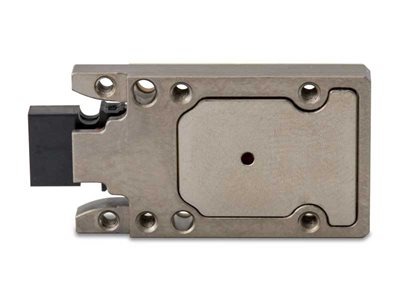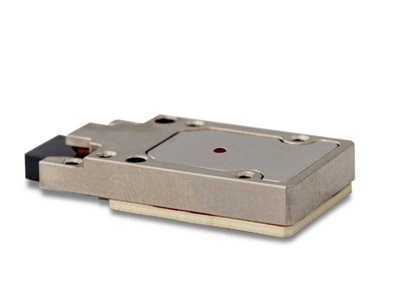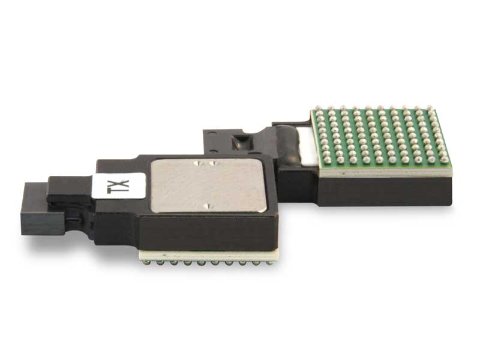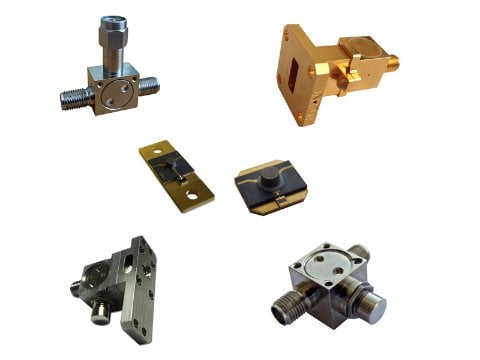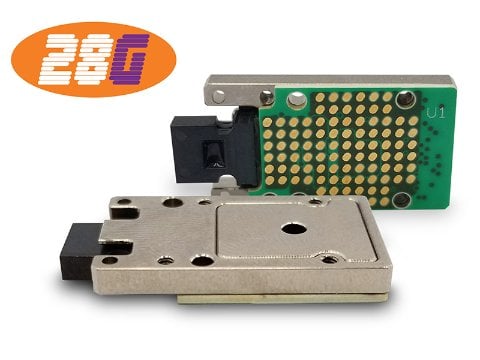- Small: Less than 6 mm high (module and interposer)
- Rugged: MIL-STD 883 shock and vibration qualified
- Sealed: Moisture and thermal shock resistant
- Storage temperature: –57 ºC to100 ºC
- Performance: up to 28 Gbps/channel over a recommended operating temperature range of –40 ºC to 85 ºC
- Sensitivity: –7.5 dBm (typical) for BER 10–12
- Low power consumption: 180 mW/channel
- 4 TRX (4+4)-lane per module (100G, full duplex)
- 12 TX or 12 RX channel per module (300G, half duplex)
- Multimode 850 nm wavelength laser
- Over 60 m reach on OM3 ribbon fiber
- Standard MT parallel fiber connector
- RoHS
- Clock and data recovery, pre-emphasis, and adjustable output
- Monitoring: LOS, RSSI, temperature, etc.
- Integrated microcontroller
- Attaches to system board with LGA interposer
Applications
- Sensor connectivity including all-digital AESA radars
- High I/O density, high BW communication links
- ISR embedded system
28G Optical Transceivers for Space
Electrical connection with interposers
LightABLE™ and SpaceABLE™ electrical connection with interposers
Optical connection with screw-in connector
Optical connection with MicroClip
Optical Interconnect Design Challenges in Space


